So, you’ve decided to get a pet rat and wonder what your options are. Perhaps you’re curious whether or not, like with dogs, there are different rat breeds that you can choose from when it comes to choosing your pet rat. Alternatively, maybe you’re wondering what color options and varieties are available. Wonder no longer, I’m here to answer all your questions!
In this guide, I’m going to give you the most complete overview of all the rat types, varieties & breeds that are available. That way, you’ll have a good understanding of the different kinds of pet rats that are available on the market so that you can make an informed decision on what kind of rat suits you best. Let’s not waste any more time and dig right in.
Pet Rat Breeds
There are many different rat species in the wild, some of the most common ones are:
- Rattus argentiventer (Rice-field rat)
- Rattus hoffmanni (Hoffmann’s Sulawesi rat)
- Rattus lutreolus (Australian swamp rat)
- Rattus norvegicus (Norway rat, or brown rat)
- Rattus osgoodi (Osgood’s Vietnamese rat)
But there are also many lesser-known rats such as these:
- Rattus montanus (Sri Lankan mountain rat)
- Rattus ranjiniae (Ranjini’s field rat)
- Rattus simalurensis (Simalur Archipelago rat)
- Rattus vandeuseni – (Van Deusen’s rat)
You might not believe it due to how successful other rat species are, but these lesser-known rats are actually endangered and threatened with extinction due to a loss of habitat.
In total, over 60 rat species can be found in the wild. However, while there are many different kinds of wild rat species, this does not mean that there are also many different domestic rat species. If you’re going to get a pet rat, you only have 1 choice of breed: the Rattus Norvegicus, also known as the Fancy Rat.
The reason why only the Rattus Norvegicus is kept as a pet is that they’re by far the most affectionate, sociable, and easily trained, which are all great qualities to have in a pet. However, while you’re limited in the breed you’re getting, there’s a lot of variety among fancy rats. Let’s take a closer look at the different types of pet rats that you can get.

Pet Rat Types
While it’s true that only 1 rat species is kept as a pet, that doesn’t mean that there isn’t a lot of variety between them. There are many different types of pet rats. The American Fancy Rat & Mouse Association recognizes 7 distinct varieties of rats. Let’s take a closer look at each of them and see what sets them apart from the others.
Standard Rat
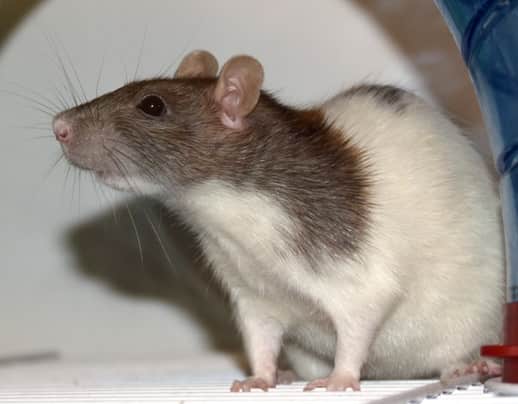
The standard rat is, as the name suggests, quite standard. It’s the most common type. This rat can be recognized by its short, smooth, and glossy coat. The males of this variety usually have slightly longer and coarser hair.
Rex Rat
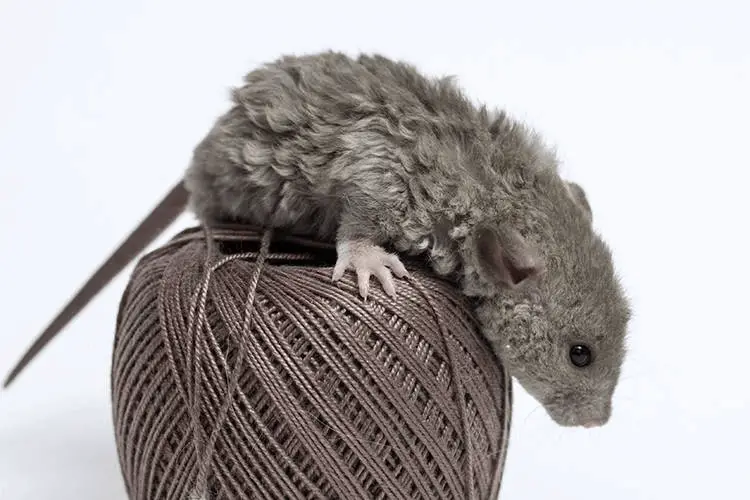
The rex rat has a coat that is evenly dense all throughout their body. Their hairs are curled, but the amount of curliness varies from rat to rat. Some are very curly, while others are less so. Males usually have more curly hair than females, and generally have a better-looking coat, but they’re also more prone to having bald spots.
Tailless rat
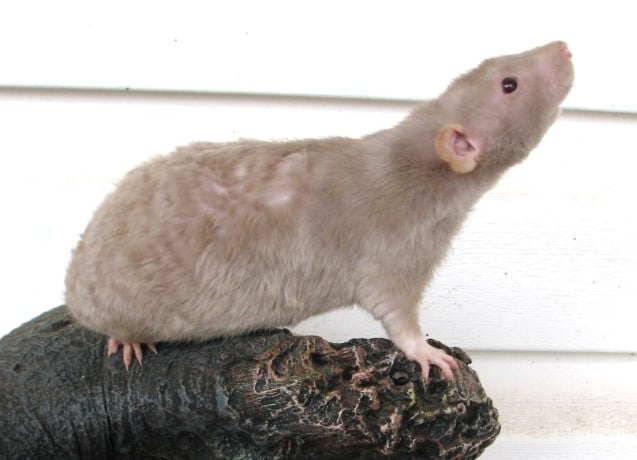
Once again, the name of this type of rat is very descriptive. As you might have guessed, tailless rats do not have a tail! Their tail has not been removed by humans, they’re born that way. These types of rats have become quite popular in recent times, probably due to the fact that many people have some misconceptions about rat tails.
Since these rats are so popular, they’re becoming more and more common because breeders increasingly breed them to keep up with the growth in demand. There are some ethical concerns when it comes to breeding these rats because the rat’s tail is not just for show. They use it for balancing, temperature control, and many other things.
Hairless Rat
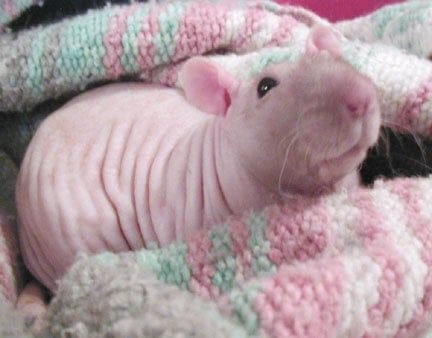
As you might’ve guessed, the hairless rat is… hairless. They do not have any hair on their body and their skin is thin, bright, and usually quite translucent. Sometimes they have whiskers, but other times they do not. If they do have them, they’re usually very short and curled.
Satin Rat
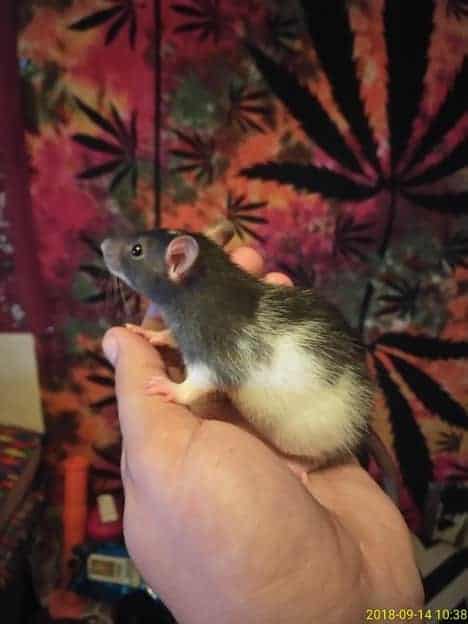
Satin rats are often confused with standard rats. They do have quite a lot in common in appearance, but there are differences. The satin rat can be distinguished by their wavy or curled whiskers, a more shiny coat that’s less fluffy than that of the standard rat. In addition, the colors are different. White on satin rats usually looks more yellow than on standard rats, and they usually have deeper blacks.
Dumbo Rat
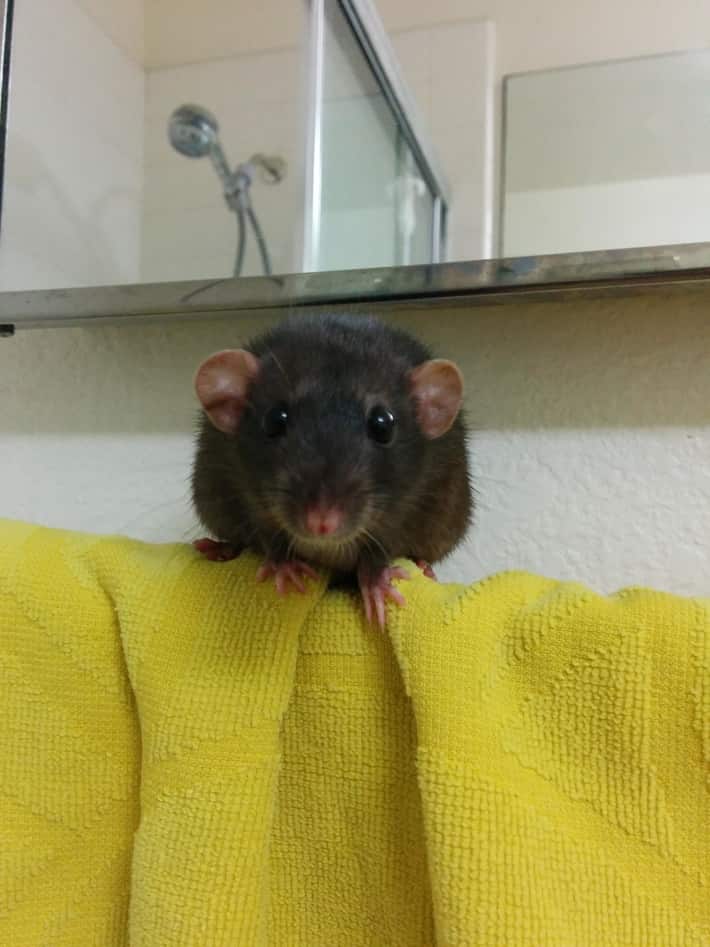
Dumbo rats are named after the fictional elephant because of their ears. Their ears are set away from the head and are very large and round compared to those of the other types, giving them a very unique appearance. They originated around 1991 in California, so they’re quite a recent mutation.
Bristle Coat Rat
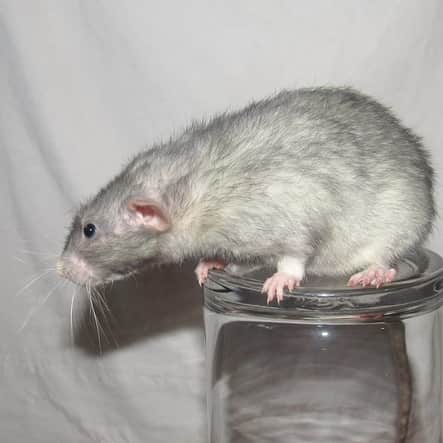
The bristle coat rat has a very unique and distinct feel when you touch it. It kind of feels like a wire brush. Their coat is very textured and is comparable to that of a wire fox terrier. In photos, they can sometimes be mistaken for a rex. However, when you touch them, you can feel the hair and can quite easily tell that it’s a bristle coat.
In general, males of this type have a harsher coat than females. Their whiskers are usually straight to curled on the ends.

Fur Colors
Pet rats come in many different colors and markings. The American Fancy Rat & Mouse Association recognizes a total of 40 distinct colors that are divided among different sections as follows:
Self
The entire body has the same color. The colors that are available in this section are:
- Beige
- Black
- Blue
- Blue-Beige
- Champagne
- Chocolate
- Cocoa
- Lilac
- Mink
- P.E. Platinum
- Platinum
- Powder Blue
- Russian Blue
- Russian Dove
- Sky Blue
- Black-eyed White
- Pink-eyed White
To see a description of all the colors, along with photos of rats that fit these color schemes, I recommend checking out this page on the AFRMA website. It’s the best way to get a complete understanding of the differences between these colors.
Any other color
Any other color is when the entire body is the same color, but the coat has individual hairs that are of a different color, except white. The colors that fall under this category are:
- Agouti
- Blue Agouti
- Chinchilla
- Cinnamon
- Cinnamon Pearl
- Fawn
- Lynx
- Pearl
- Russian Blue Agouti
The AFRMA website has a great overview with pictures and text descriptions that highlight the defining features of the different colors. Check it out here.
Any other color pattern
The colors in this category are similar to the previous section. The main difference is that the colors are arranged in a certain pattern in this category. The different colors that are recognized in this category are these:
- B.E. Siamese
- Blue Point Siamese
- Burmese, Himalayan
- Russian Blue Agouti Burmese
- Russian Blue Point Siamese
- Seal Point Siamese
- Merle
Check out the characteristics and photos of these colors here.
Silvered
The colors that fall under this section are evenly interspersed with white/silver hairs. The colors that fall under this category are these:
- Amber
- Silver Black
- Silver Blue
- Silver Chocolate
- Silver Fawn
- Silver Lilac
- Silver Mink
Check out a description of their characteristics along with photos of the different colors on the AFRMA website.
Marked
There are many different markings that are recognized by the AFRMA, these are:
- English Irish
- Irish
- Down Under
- Berkshire
- Essex
- Variegated
- Blaze
- Dalmatian
- Hooded
- Bareback
- Capped
- Masked
To see the different markings, check out this page. It gives a description of how you can identify each marking along with pictures to make the identifying process easier.

Eye color
The last thing I want to briefly talk about is the different eye colors that rats can have. There are 4 in total, and they’re an essential part of defining a rat’s variety. The rat’s eyes can be black, ruby, pink/red, or odd-eyed.
Black eyes are, as the name suggests, black. However, there are different levels of black that their eyes can be. Some rats have an eye color that’s a deeper black than others.
Ruby eyes look quite similar to black eyes under normal circumstances but change to a red color under a bright light.
Odd-eye rats have eyes that have two different colors. Usually, 1 eye is pink and the other is dark ruby or black. Take a look at the image below.
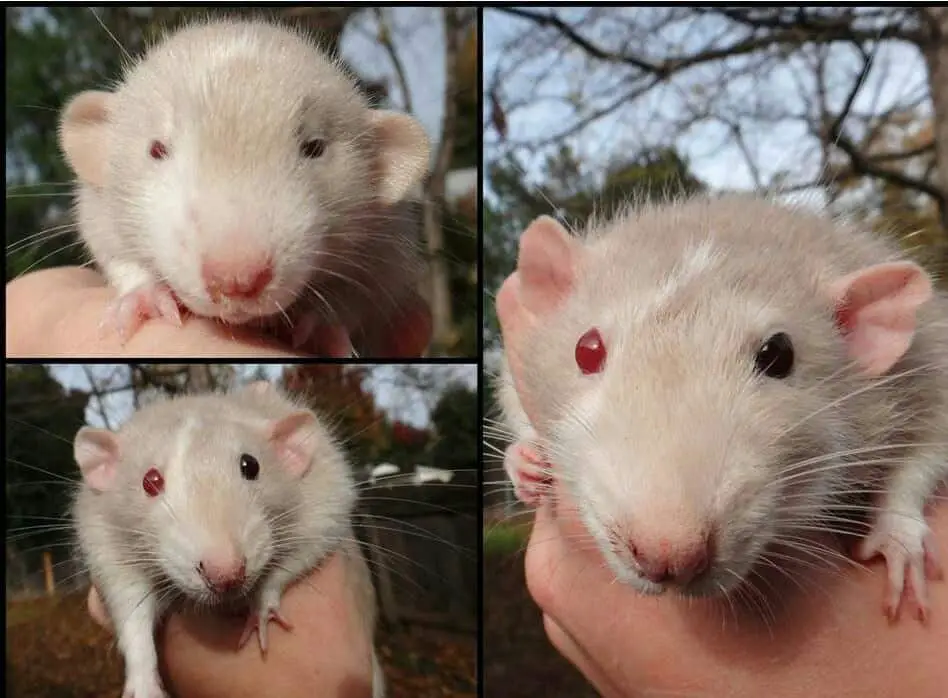
Final words
That’s all you need to know about all the different rat colors, types, and varieties! As we’ve discovered, while there are many species of rats, all pet rats are the descendants of the same rat species, the Rattus Norvegicus.
However, while they’re all part of the same species, there is a huge amount of variety between them. Some have no tail, others have dumbo ears, and some have no hair! They also come in many different colors, markings, and eye colors. There truly is something for everyone.
All in all, there’s an endless variety of pet rats, which means that no two rats are the same. They’re all unique little creatures. Which one is your favorite?
- How Long Do American Eskimo Dogs Live? Important Factors and Care Tips - September 29, 2023
- Do American Bulldogs Need Grooming? Essential Tips and Care Guidelines - September 29, 2023
- Do Bengal Cats Enjoy Playing? Essential Tips for Keeping Them Active - September 29, 2023